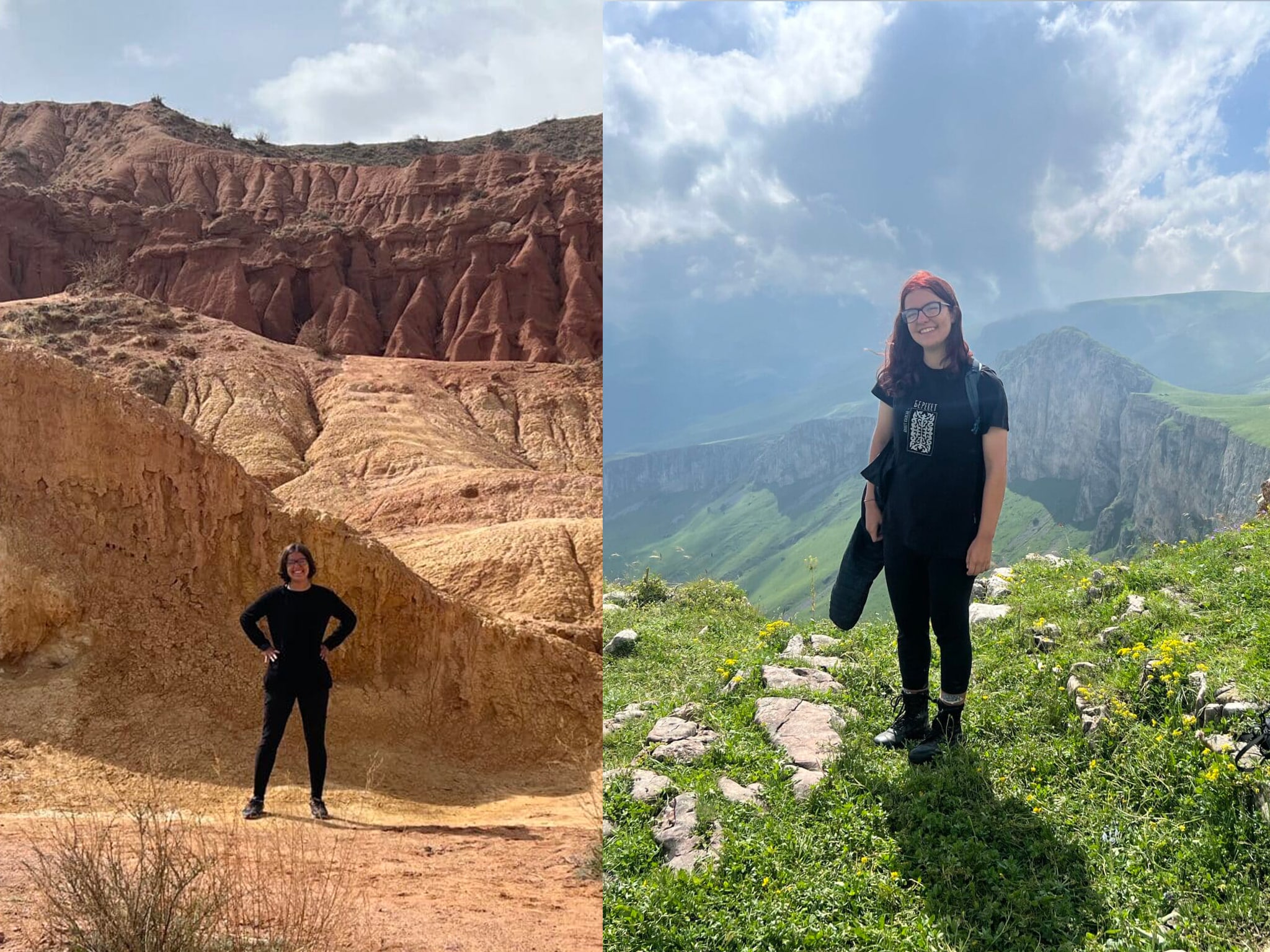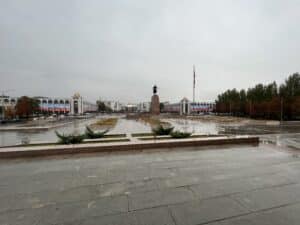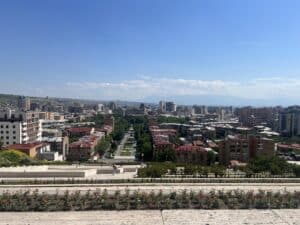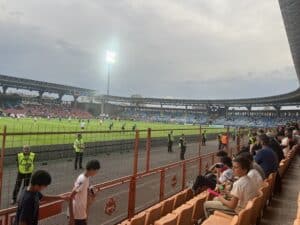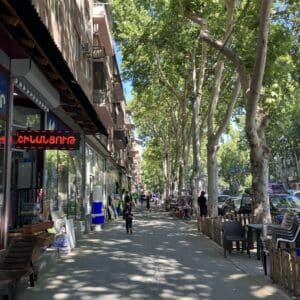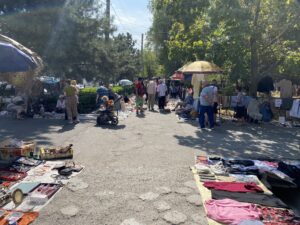I spent eight weeks in Yerevan, Armenia with SRAS and another eight with a US-government run program in Bishkek, Kyrgyzstan (SRAS also hosts programs in Bishkek). Afterwards, I was surprised by how similar the two cities felt despite being thousands of miles apart. That said, each city also has characteristics that make it unique which should be considered if you have to decide between the two as a study abroad location.
The following was written by Lilia Grace Maturo, an SRAS graduate and, at the time of writing, a student at UC Berkeley.
Cost of Living
One thing that made my experience in Bishkek especially exciting was the low cost of activities. I joined kickboxing lessons on a whim for $20 a month, went to the theater over the winter for $5-$10 a ticket, and picked up multiple new crafts through masterclasses costing less than $15.
The cost of local organized day tours is about 2x more in Armenia, but they are still relatively affordable. Yerevan was also a bit more expensive overall, with groceries, restaurant meals, and public transport running about 1.5-2x more expensive in Yerevan. The cost of hotel accommodation is about the same.
Gyms and workout classes were especially expensive in Yerevan, with prices almost comparable to America. In Bishkek, gyms are much less expensive.
Overall, Bishkek is about half the cost of Yerevan. SRAS recommends budgeting $30-50 per week for Bishkek and $70-$120 per week for Yerevan. You can find out more in the SRAS city guides for Yerevan and Bishkek on this site. However, if you are deciding on locations specifically by budget, Central Asia is the clear choice.
Things To Do and Travel Opportunities
Both Bishkek and Yerevan are medium-size cities of about one million people each, with great destinations nearby for weekend trips. While the ride might not be comfortable, both countries have an extensive network of marshrutki (mini-bus shared taxis) that make most destinations affordably reachable.
In Kyrgyzstan, I don’t think it’s possible to run out of things to see, even over a yearlong program! Each region has a distinct feel and outdoor activities such as skiing, mountaineering, rock climbing, and horse trekking are all available and affordable. Some of the top attractions reachable from Bishkek include Fairy Tale Canyon (a slice of red-rock desert nestled between snow-capped mountains and an alpine lake) and Burana Tower (A UNESCO listed archeological site from the 11th century). You can reach the second most populous city, Osh, by marshrutka in 14 hours. You can also fly there if you are willing to spend a bit more. Osh is worth a visit if only to see the Sulaiman-Too Museum, which is built into a mountainside.
Kyrgyzstan is a predominantly muslim country, with a sizable Russian orthodox community. Bishkek has several striking new mosques and the Dungan Mosque in the city of Karakol was a personal favorite to visit.
While there might be fewer museums and cultural attractions in Bishkek itself, the stunning mountains surrounding the city more than make up for this. Beautiful nature is within walking distance of many points in the city and there are many transit-accessible hikes within 30 minutes or less.
Armenia, meanwhile, has particularly rich historical architecture that Kyrgyzstan lacks. Armenians are proud of the fact that Yerevan was founded even before Rome, and that discoveries such as the world’s oldest shoe and wine-making facilities have been found in Armenia.
Armenia was also the first Christian state and remains exceedingly religious, with most of the population adhering to the local apostolic church. Most excursions out of Yerevan will include at least one of Armenia’s stunning monasteries, many of which were built in stunning mountainside locations. If you get tired of monasteries, other interesting day trips include the Byurakan Astrophysical Observatory (an old Soviet telescope still in use), Lake Sevan (a massive alpine lake popular with locals), and Mt. Azhdahak (an extinct volcano with a lake and the summit).
In terms of international travel, Yerevan offers opportunities to explore Europe and the Caucasus, while Bishkek serves as an excellent base to see more of Central Asia. Round-trip flights from Yerevan to Western Europe start from around $150-$200. If you are looking to go to either Turkey or Azerbaijan, you’ll need to go through Georgia first, as geopolitics has closed Armenia’s borders with those two neighbors. From Bishkek, Almaty, Kazakhstan is a great weekend trip by marshrutka. Tajikistan and Uzbekistan are also an easy flight from Bishkek, although both are likely to run you at least $200 round trip. You can save considerable money by going by bus, but you’ll need to invest the better part of a day traveling.
Both Armenia and Kyrgyzstan have had recent outbreaks of violence on their borders, but this is definitely avoidable as a traveler.
Local Cultural Diversity
One thing I didn’t expect from Bishkek was its cultural diversity. Bishkek has large Russian, Uzbek, Uyghur, Dungan, and Tartar populations and hosts students from around the world. Armenia’s population is much more solidly Armenian – although they do have some interesting minorities – Yazidis, Assyrians, and Russians, but in much smaller numbers. Yerevan itself has many more European expatriates and visitors, however, and it is much easier to find events geared towards English-speaking foreigners.
I noticed an extremely strong sense of national pride in Armenia, both among Armenian citizens and Armenian “repats” (members of the diaspora who resettled in Armenia). Few young Armenians in Yerevan want to leave their country. Meanwhile, Bishkek is full of young people who dream of seeking their fortunes abroad. I think this perhaps makes young people in Bishkek a bit more outgoing in wanting to meet and learn from people from abroad.
Practicing Russian in Bishkek and Yerevan
Both Bishkek and Yerevan provide ample opportunity to practice your Russian language skills in daily life. Nearly everyone speaks Russian to some degree in both cities. Both also have considerable Russian populations.
However, Russian is much more prevalent in Bishkek, where locals are much more likely to initiate conversations in Russian. Because there are so few westerners, the general assumption is that if you are white, you probably speak Russian. In fact, while finding young people that may have some English-language ability in Bishkek is common, it is relatively rare to find fluent English-speakers in Bishkek. A lack of English speakers in Bishkek was actually helpful when I started my program, as I was forced to challenge myself and learn new vocabulary.
In Yerevan, Armenian is used much more often in everyday life and I found that more people had a better basic grasp of English. Conversations were more likely to be started in Armenian or English. Fewer Armenians speak Russian at home and activities like hiking trips are much more likely to be conducted in Armenian (however, people will make sure to look out for you once they understand you don’t speak Armenian). This being said, I never had any problems practicing Russian in Yerevan, but it just felt less baked into the culture overall.
Overall Impressions
Both locations will allow you to pursue your goals of learning Russian and experiencing a new culture. You’ll meet amazing locals, try new foods, explore breathtaking nature, and get out of your comfort zone.
Safety wasn’t an issue in either city – everyone in my cohort was able to walk alone at night without any reservations in both cities. Bishkek does have some issues with pickpocketing and aggressive dogs, but both of those issues can be avoided with a few precautions. Road safety is likely the biggest danger that foreigners face. But I did not notice any significant difference between the two cities.
Yerevan was perhaps more “comfortable” – in terms of more amenities and more opportunities to meet English-speaking Europeans and in terms of it being closer to a “western” culture.
Bishkek’s being so far removed from the American and European consciousness actually made the experience of studying there more fulfilling for me. Whenever I tell fellow Americans that I studied abroad in Kyrgyzstan, very few people know even one fact about it. There are so few Western tourists that we would ask anyone we heard speaking English on the street how they ended up in Central Asia. Locals we met were always interested in our experience of Kyrgyz culture and I made multiple friends through chance encounters. The fact that culture and county was so different from what I grew up with made this a much more exciting and fulfilling educational experience for me. Something about Central Asia still feels simply larger than life to me.
However, if one is not open to experiencing new things, and doesn’t intentionally seek out places to find community and meet new people, especially by using Russian, this could also make studying in Central Asia an isolating and unpleasant experience.
Overall, both Yerevan and Bishkek have upsides and downsides – although if I had to choose one to go back to, I would personally choose Bishkek in a heartbeat.
You’ll Also Love
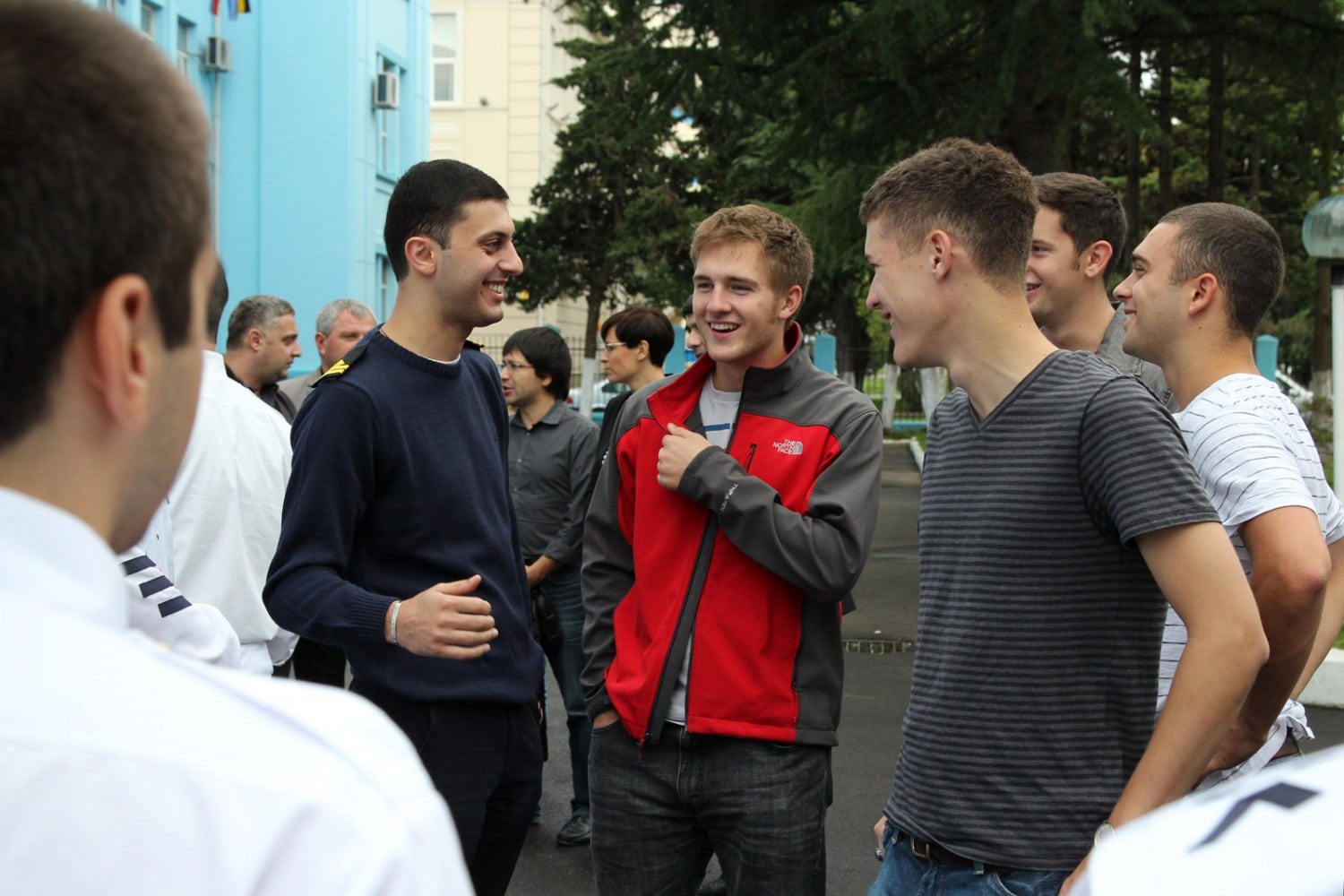
9 Reasons To Visit Batumi, Georgia
When the world first came into existence, the Creator had a big meeting where he divided up the Earth and gave different pieces of land to all the people of the world. As luck would have it, the Georgian people were having a supra (a grand feast) the same day, had a little too much […]
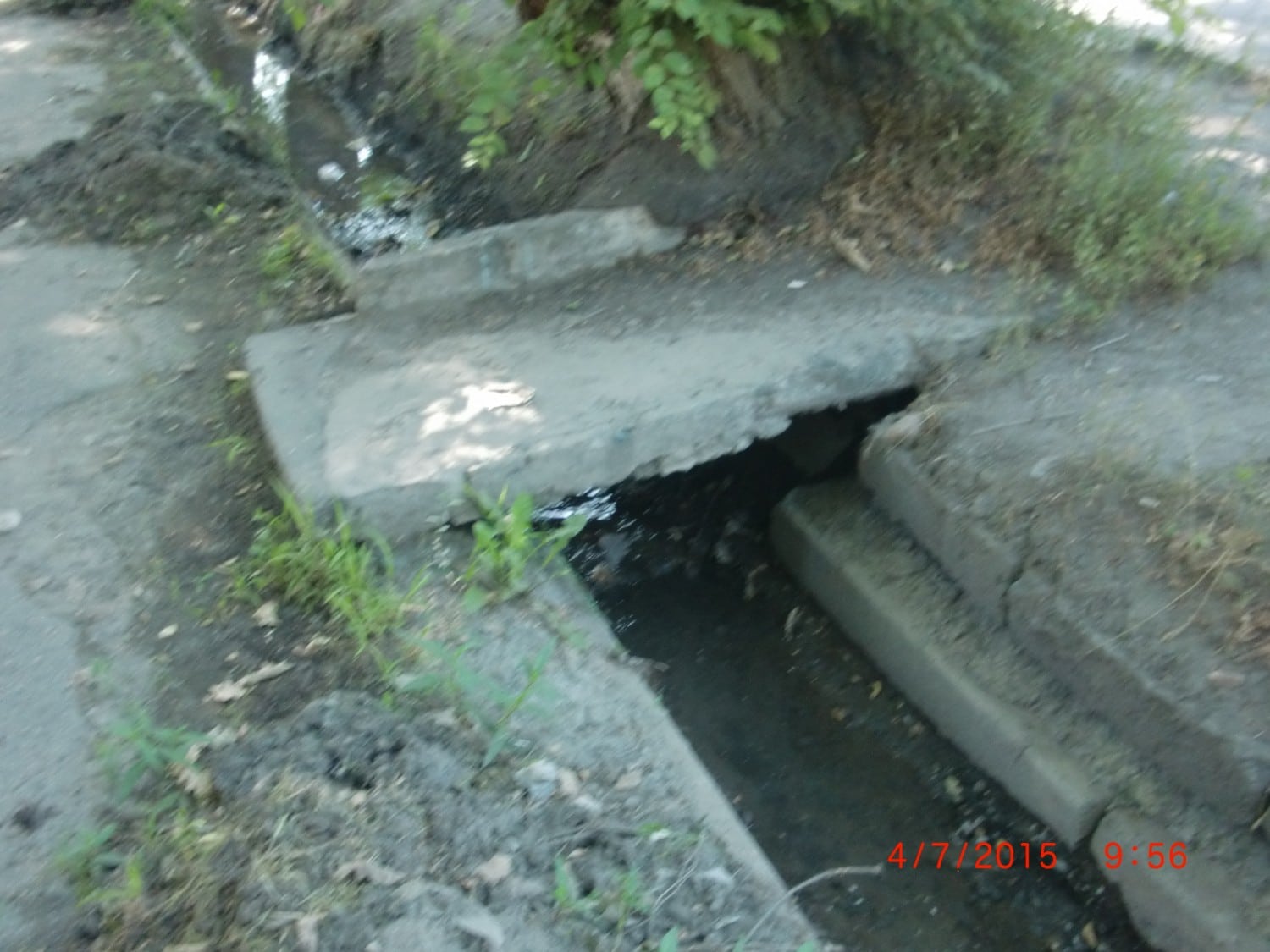
Bishkek Irrigation Canals
There is a lot going on in Bishkek and there are a lot of pleasant parks and a few wide, shaded boulevards. While walking along them looking around, in the quieter areas, you will notice the sound of a babbling brook. Look down and you will find one of Bishkek’s most interesting characteristics that no […]
Transportation in Warsaw
Poland offers a broad network of public transportation with Warsaw serving as the central hub. Traveling to and around Warsaw is simple whether you arrive by plane or train. Warsaw’s international airport (Frederic Chopin) has a few direct bus lines to the city center, taking around half an hour to get from Chopin to Centralny […]
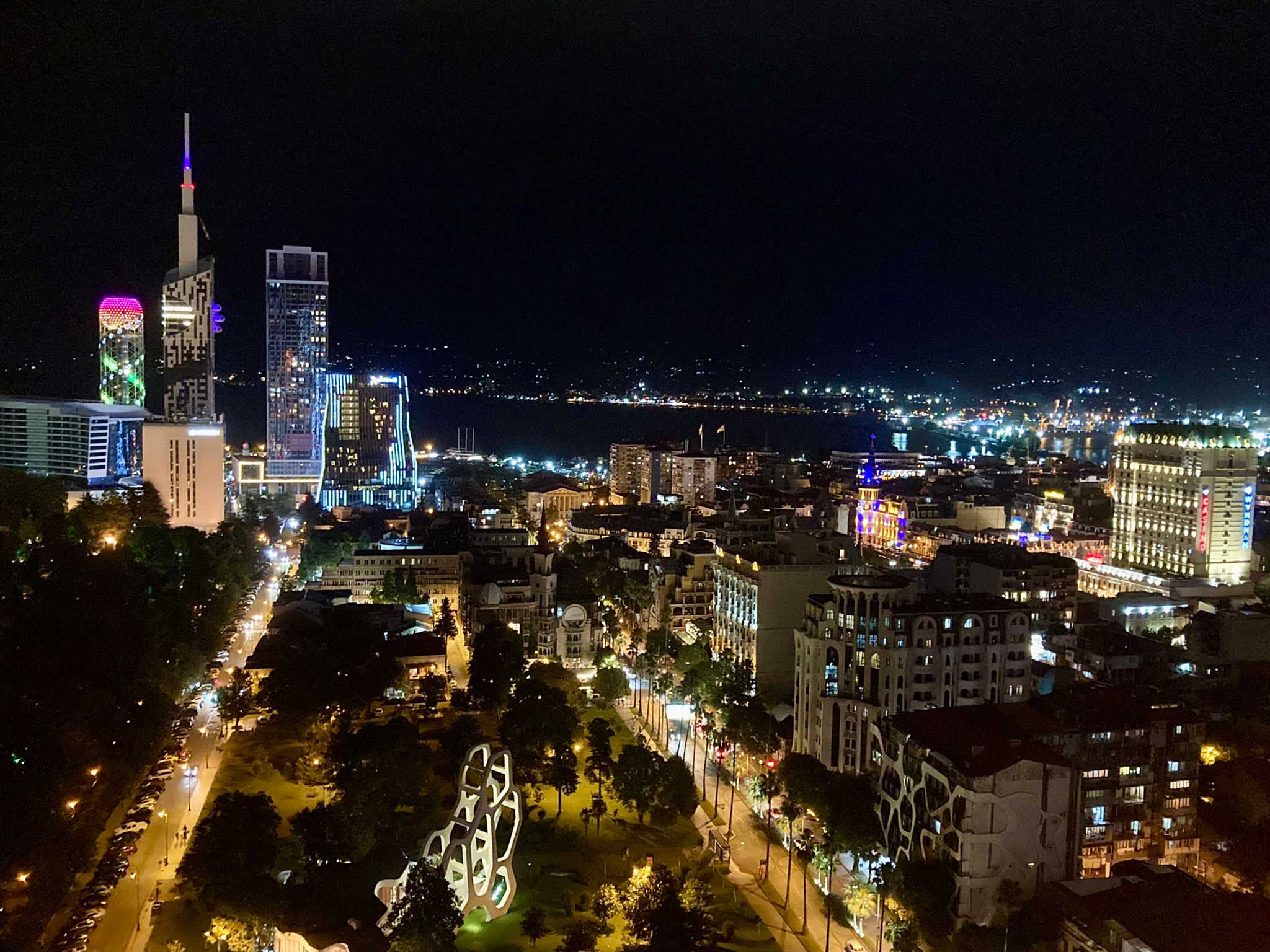
The Wonders of Batumi, Georgia
While studying abroad with SRAS in Georgia, we had the opportunity to leave the city and explore the wider country. We also had a lot of free time to explore the incredible city and all the attractions that surrounded us everyday. Here, I’ll share some of the memorable places I enjoyed most. I definitely recommend […]

